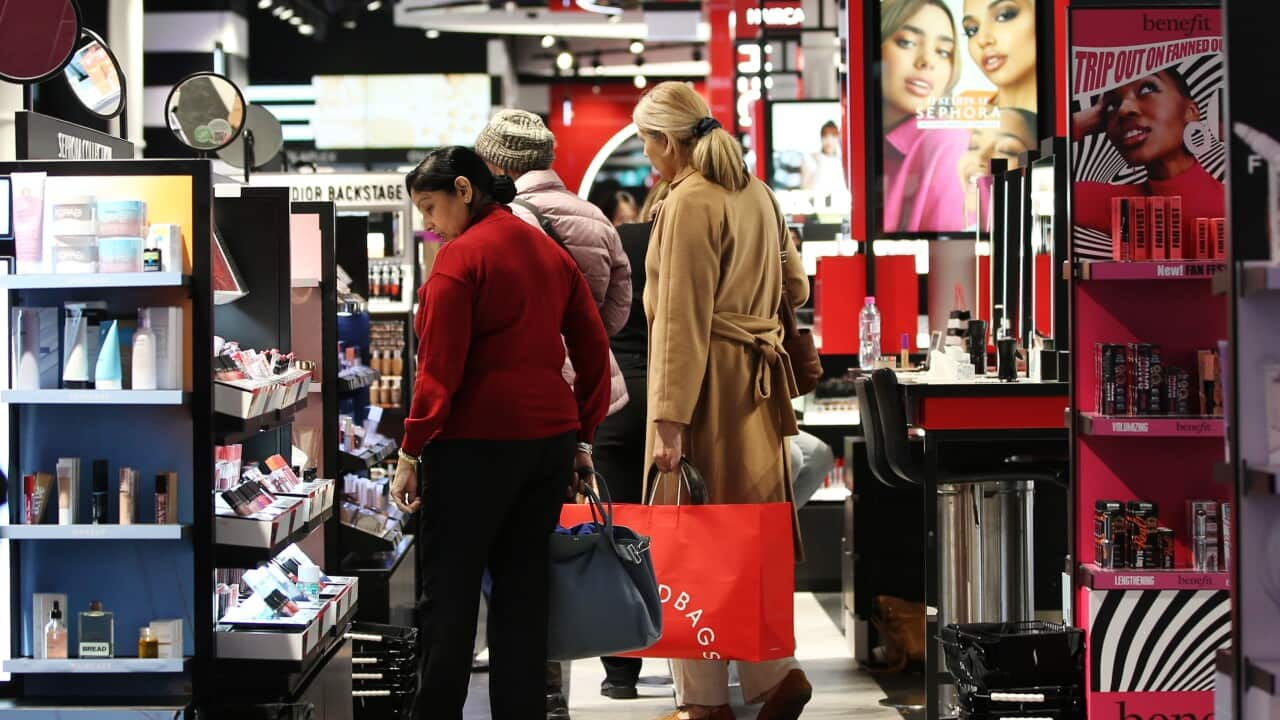Key Points
- The Reserve Bank of Australia will hold its November board meeting next Tuesday.
- At its last meeting, it kept the official cash rate on hold at 4.1 per cent.
- New economic data indicates it may increase the rate this month.
The Reserve Bank of Australia (RBA) decided not to increase the official cash rate last month, keeping it on hold at 4.1 per cent.
But could the latest data around inflation, unemployment, and retail spending lead to an increase at the RBA's next meeting?
Inflation
Consumer Price Index (CPI) figures, released by the Australian Bureau of Statistics (ABS) last week, showed in the latest quarter.
CPI increased by 1.2 per cent during the September quarter — and 5.4 per cent annually.
The most significant price rises during that quarter were in automotive fuel (7.2 per cent), electricity (4.2 per cent), rents (2.2 per cent), and new dwelling purchases by owner-occupiers (1.3 per cent), according to the ABS.

Consumer prices rose 1.2 per cent over the three months to September, making a 5.4 per cent increase over the past 12 months. Source: SBS News
"It was higher than what the RBA had been expecting a few months ago when they sort of started their pause," he told SBS News.
"That's definitely a factor that will be weighing on their minds, and adding to the case for an interest rate increase.
"That's because not only was the number higher than expected, but inflation generally has a lot of momentum in it — if it's high in the September quarter, it will likely be higher in the December quarter, as well.
"So the fact that we're seeing this strong inflation data suggests that the trajectory for inflation coming down is not as certain as we once thought it was."
Unemployment
Another factor taken into consideration by the RBA, although to a lesser extent than inflation, is unemployment.
The national unemployment rate fell to 3.6 per cent in September, from 3.7 per cent, according to data released by the ABS earlier this month.
A modest employment increase of 7,000 was recorded over September, coming in softer than the consensus forecast of 20,000 and well below the 63,300 of the month before.
The lacklustre growth in employment was also largely driven by a 46,500 lift in part-time roles, with full-time roles down 39,900.
"The unemployment rate is still very low," Gross said.
"It's not as low as it used to be used to be … but certainly, we haven't really seen any hint of a recession or a slowdown of any sort.
"I think that's welcome news; it seems like inflation is still strong, and despite the interest rate rises, so far, the economy has been resilient."
Retail spending
While retail spending wasn't "as important" as inflation or unemployment figures in the RBA's decision-making process, it was "still worth looking at", Gross said.
Figures released by the ABS last week showed Australian retail sales grew by a robust 0.9 per cent in September - coming in above market expectations of a 0.3 per cent increase and stronger than the 0.3 per cent lift the month before.
Though the September result was the largest since January, lacklustre spending for most of the year means underlying growth in retail turnover remains historically low.
"Retail figures have generally softened after sort of the post-COVID revenge surge, as every man and his donkey started to buy whatever the department stores would sell them," Gross said.
"But in the last month, those retail figures went up 0.9 percentage points, which is, for a single month, a pretty big jump.
"You wouldn't want to hang your hat on what happens in one month … but 0.9 is better than zero and better than for a falling number, so it certainly isn't, again, screaming evidence of a weak economy."
Will the RBA raise rates next month?
It was "more likely than not" that the RBA would increase the cash rate at its November meeting next Tuesday, Gross said.
"Second-guessing the RBA is always tricky, but I would say a common pattern they have is they sort of wait for the quarterly inflation figures … and then they move after they get that latest read on the economy," he said.
"So I think it would be completely within their modus operandi to increase interest rates in November and signal that if inflation stays high, they might have to do so again."
Gross said if there was a rate rise in November, the RBA would likely "leave the door ajar" to further increases.
"At the end of the day, interest rate increases hunt in packs - you usually don't see one and then nothing else, but it would ultimately depend on what they see in the data," he said.
"If they saw the cost of coffee, the cost of going out, the cost of the more day-to-day expenses keep on rising, I think that would be a sign that they probably go again."
When could rates start coming down?
If inflation dropped significantly or unemployment rose quickly, "we would certainly see an end of interest rate hikes", Gross said.
The RBA could even be "tempted" to cut them, he said.
"I don't think they would do that, straightaway, at the first sign of trouble — but certainly, if things do sail off quicker than expected, we could see interest rate cuts by sometime towards the middle of the year."
"It depends on what happens."
Additional reporting by AAP











